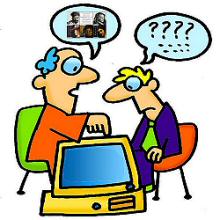
 |

by Lloyd A. de Vries
 What's happened to English?
What's happened to English?
No, this isn't a rant about the desecration of my native language by the illiterati, although give me another soapbox and I'm quite prepared to go on and on about that.
I mean the English versions of foreign postal agency Web sites.
Several years ago, I wrote that many of these sites had buttons to click to give you an English translation. These buttons were miniature U.S. or British flags, or "EN."
Many still do.
But, at the Belgian site, for example, the information in Flemish was for 2006, while the information in English was from 2003. Now, if you go to De Post's "Philately" portal page <http://www.post.be/site/nl/postgroup/subsidiaries/philately/languageSelection.html>, you are offered a choice of English, Francais or Nederlands, but if you click on English, the page that comes up is all in French!
Germany's once-excellent English-language translation for Deutsche Post philately has disappeared entirely. Again, if you go to the English-language Philately page <http://www.deutschepost.de/dpag?tab=1&skin=hi&check=yes&lang=de_EN&xmlFile=938>, all the links within the English text go to German-language pages listing the new issues and how to order.
The Netherlands briefly had an English-language site; it's gone.
Generally, English has been the language of the Internet, plus English-speaking stamp collectors represent a significant philatelic market.
I know I probably should speak more than one language, but if you want to sell to American collectors (still a fairly good-size market), or even those in countries who speak a third language, it seems to me an English-language site is important. And it's probably not that expensive.
I'm usually a big fan of booking my trips online, but for last summer's Stampshow 2005 in Grand Rapids, I was stumped. As oil hit $50 or more a barrel (ah, those were the days!), airline tickets kept rising, until the best fare I could find from Newark, NJ, was about $360.
My requirements included making a 7 p.m. meeting on my day of arrival and staying for most of the show on Sunday. While that didn't seem to be adding to my cost, it wasn't making the arrangements any easier.
Eventually, I found I could save $100-$150 by flying out of LaGuardia Airport, but I didn't relish the thought of driving across New York's Manhattan during morning rush hour!
So I visited my local American Automobile Office, mostly for advice on whether a detour to LaGuardia was practical. While I was there, a AAA airline reservation clerk found a $120-cheaper fare out of Newark at the times I wanted.
She offered to let me book the flight myself, rather than pay AAA a $30 booking fee. (The airlines now rarely give commissions to travel agents, which is why even a do-it-yourself service like Travelocity charges a fee.) However, I figured she did the work finding the deal; I'd never find the fare again by the time I got home; the fare might not still be available by the time I got home; and I would still be $90 ahead after paying the $30 fee.
The Internet is a great tool, but sometimes old-fashioned ways still work better.
I'm playing around now for Ameristamp Expo 2007 in Portland, but if I don't find what I consider a reasonable price for airfare in a few months, I'm headed back to a travel agent.
Some estimates say as much as half of all e-mail messages now are spam, reports The Christian Science Monitor.
It further points out that the federal CAN-SPAM Act, which went into effect Jan. 1, 2004 does not reach across borders. "Much of the spam that Americans receive in their inboxes comes from the Bahamas, Europe, or the Ukraine."